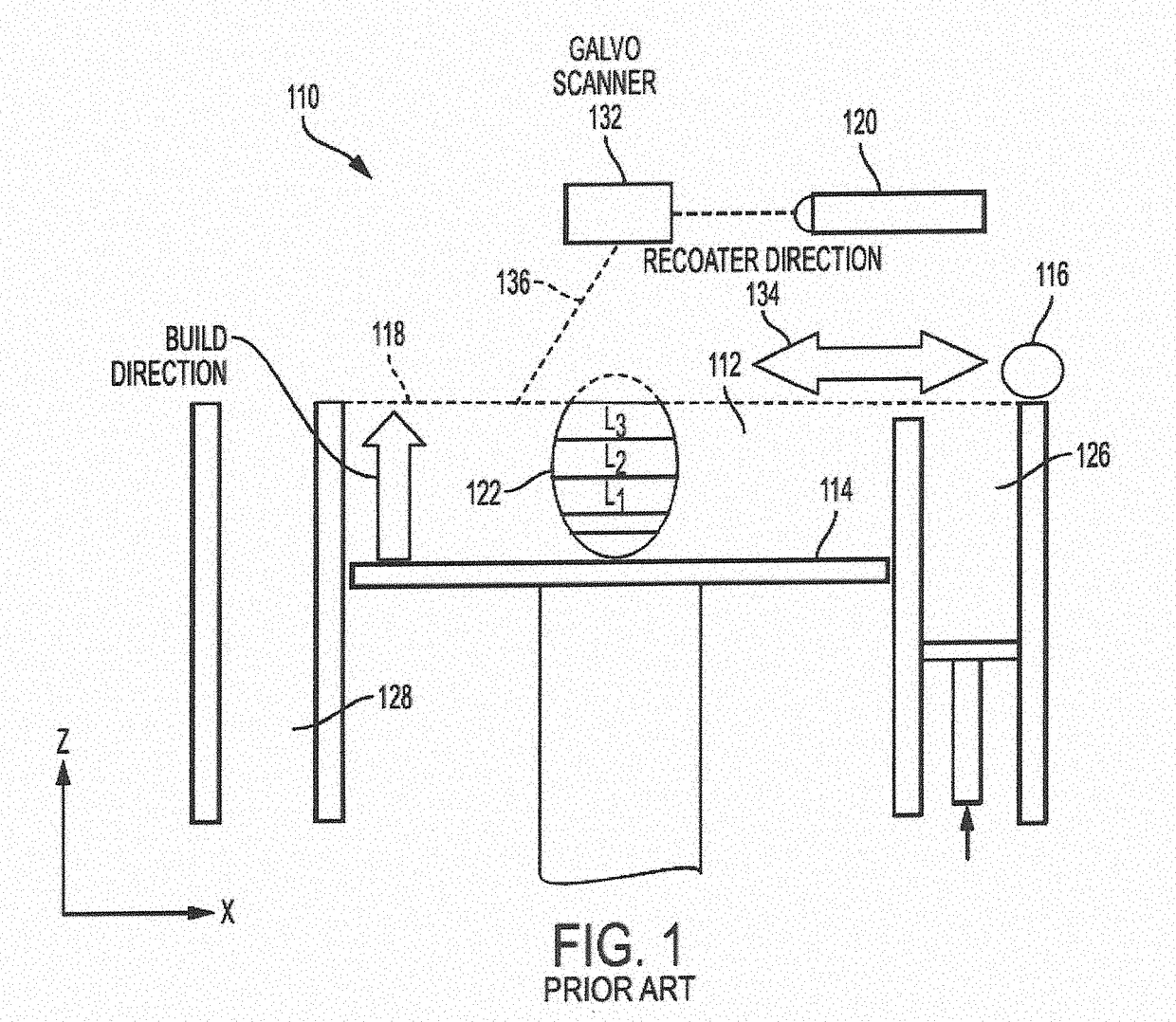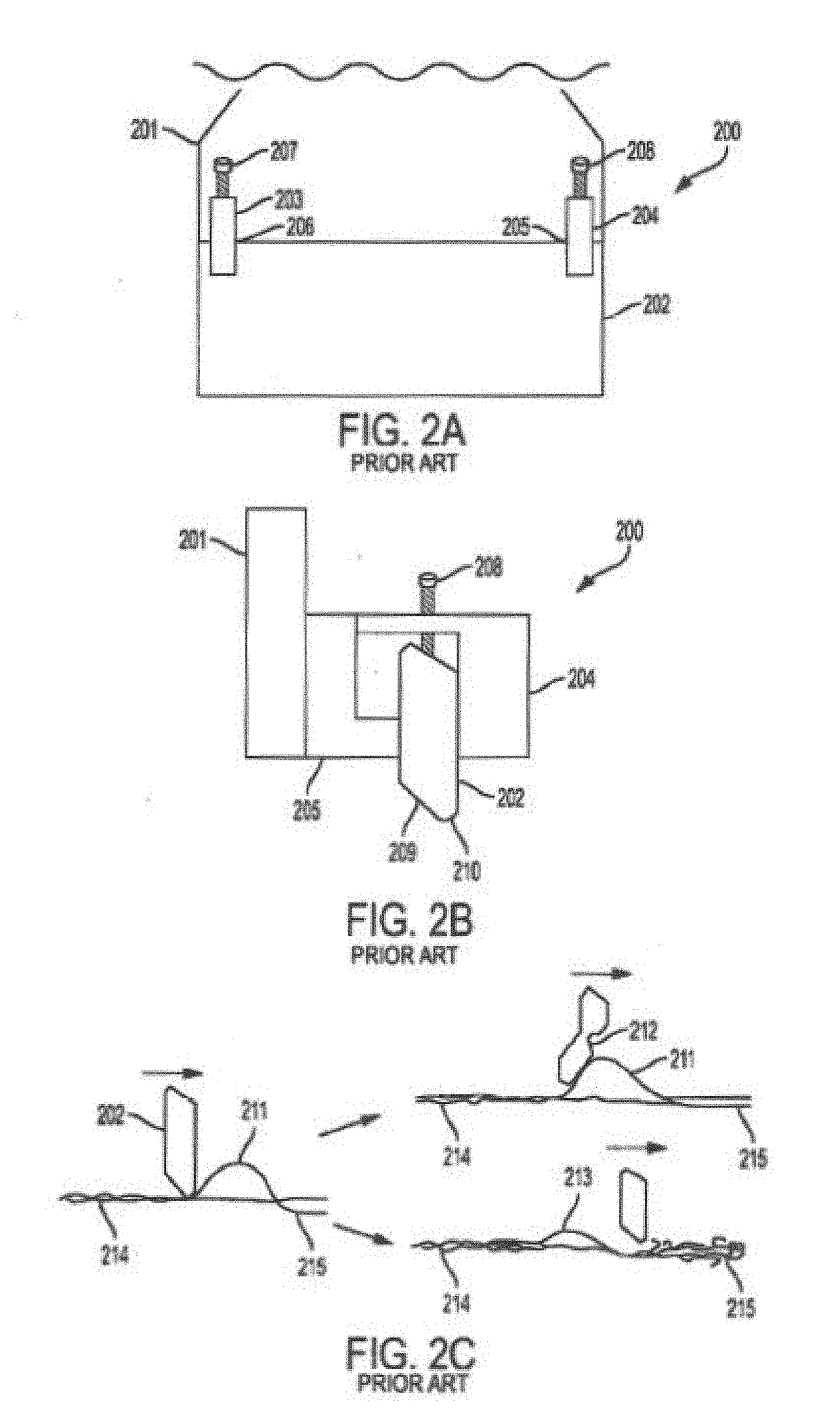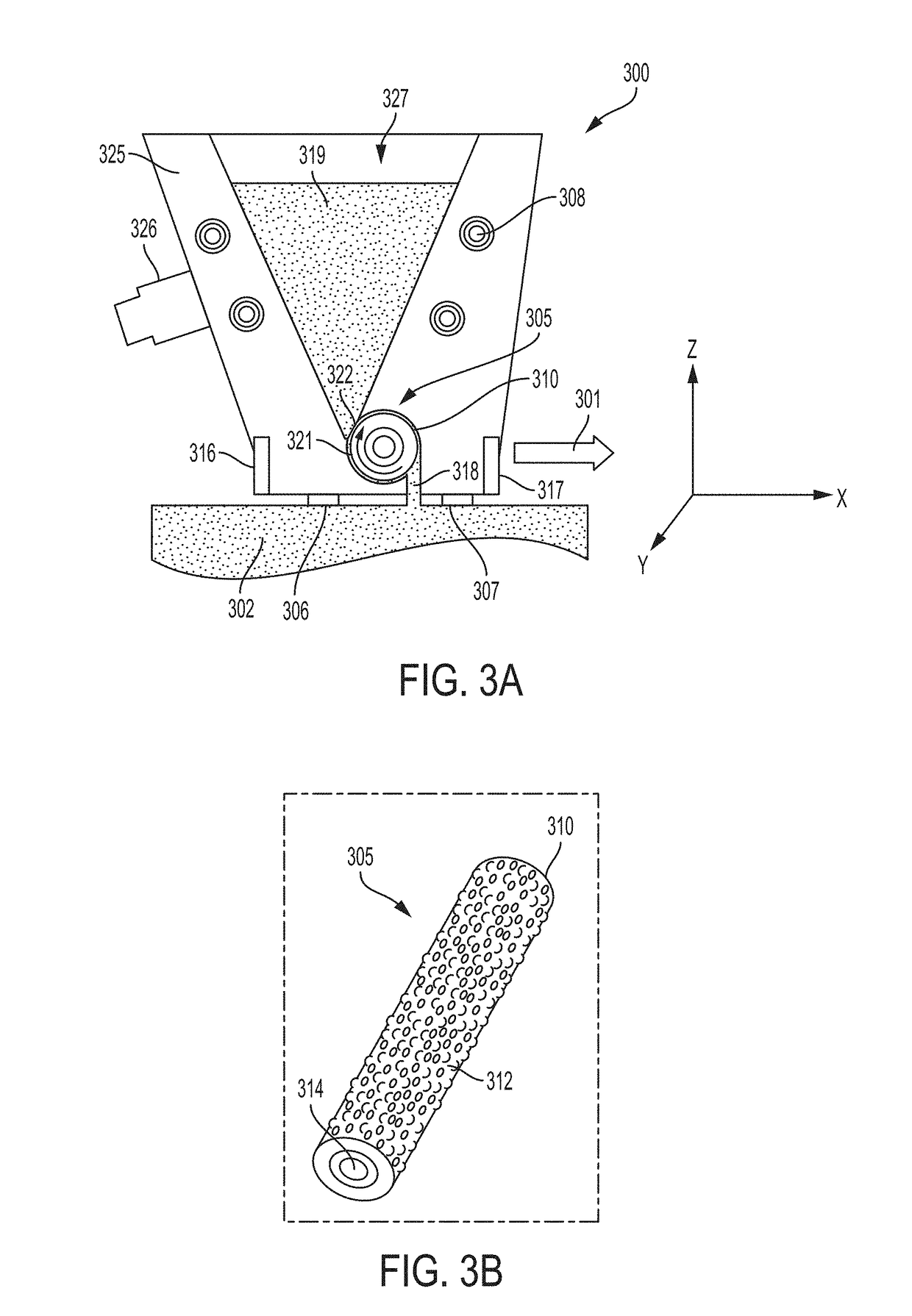Powder bed re-coater apparatus and methods of use thereof
a re-coater and re-coater arm technology, applied in the direction of coatings, applying layer means, manufacturing tools, etc., can solve the problems of re-coater blades mounted on the re-coater arm encountering surface features, re-coater blades may become damaged, and damage to the surface featur
- Summary
- Abstract
- Description
- Claims
- Application Information
AI Technical Summary
Benefits of technology
Problems solved by technology
Method used
Image
Examples
Embodiment Construction
[0030]The detailed description set forth below in connection with the appended drawings is intended as a description of various configurations and is not intended to represent the only configurations in which the concepts described herein may be practiced.
[0031]In one aspect of the invention, as shown in FIG. 3A, a recoater apparatus 300 is mounted movably mounted to an AM apparatus. The recoater apparatus 300 includes a powder hopper 325 for holding a powder 319 for use in an AM process. The recoater apparatus may be mounted to a track system, and / or rail system, and / or a robotic arm such that the movement of the recoater apparatus 300 can be controlled along the x-axis, y-axis, and / or the z-axis, for example. As shown in FIG. 3A, the recoater apparatus may extend along the y axis and may move across a powder bed 302 in a direction 301 which may be perpendicular to the x-axis. The powder bed 302 may include powder and / or an at least partially fused and / or sintered component being b...
PUM
| Property | Measurement | Unit |
|---|---|---|
| Length | aaaaa | aaaaa |
| Height | aaaaa | aaaaa |
| Height | aaaaa | aaaaa |
Abstract
Description
Claims
Application Information
 Login to View More
Login to View More - R&D
- Intellectual Property
- Life Sciences
- Materials
- Tech Scout
- Unparalleled Data Quality
- Higher Quality Content
- 60% Fewer Hallucinations
Browse by: Latest US Patents, China's latest patents, Technical Efficacy Thesaurus, Application Domain, Technology Topic, Popular Technical Reports.
© 2025 PatSnap. All rights reserved.Legal|Privacy policy|Modern Slavery Act Transparency Statement|Sitemap|About US| Contact US: help@patsnap.com



